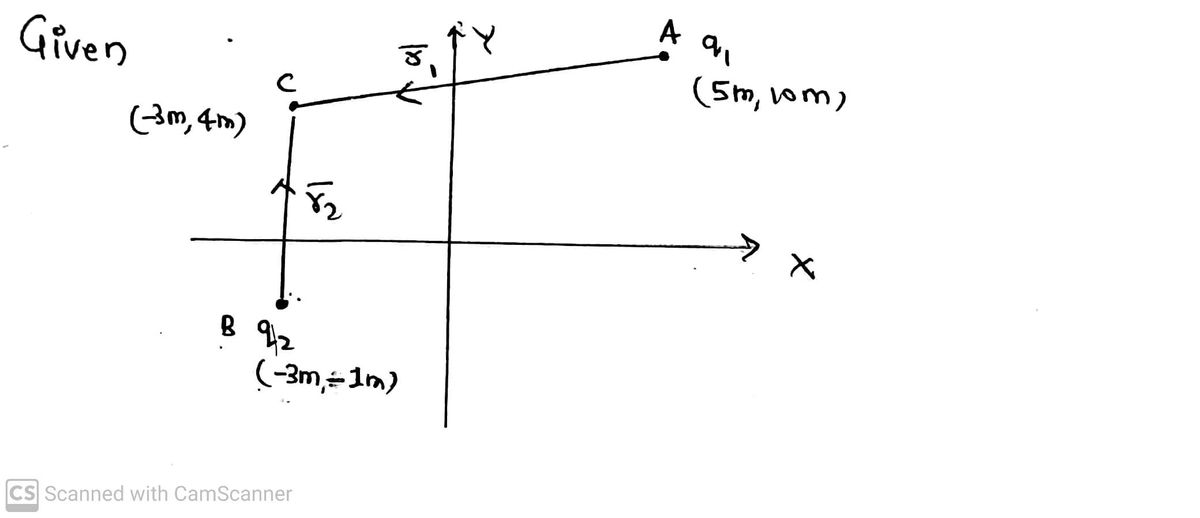Given a charge q1= 50nClocated at the XY coordinates (5m, 10m) and a charge q2= -20nC located at the XY coordinates ( -3m, -1m). The field point has coordinates (-3m, 4m). Find r1 and r2?
Given a charge q1= 50nClocated at the XY coordinates (5m, 10m) and a charge q2= -20nC located at the XY coordinates ( -3m, -1m). The field point has coordinates (-3m, 4m). Find r1 and r2?
Physics for Scientists and Engineers: Foundations and Connections
1st Edition
ISBN:9781133939146
Author:Katz, Debora M.
Publisher:Katz, Debora M.
Chapter24: Electric Fields
Section: Chapter Questions
Problem 14PQ: A particle with charge q on the negative x axis and a second particle with charge 2q on the positive...
Related questions
Question
Given a charge q1= 50nClocated at the XY coordinates (5m, 10m) and a charge q2= -20nC located at the XY coordinates ( -3m, -1m). The field point has coordinates (-3m, 4m). Find r1 and r2?
Expert Solution
Step 1

Step by step
Solved in 2 steps with 2 images

Recommended textbooks for you

Physics for Scientists and Engineers: Foundations…
Physics
ISBN:
9781133939146
Author:
Katz, Debora M.
Publisher:
Cengage Learning

Principles of Physics: A Calculus-Based Text
Physics
ISBN:
9781133104261
Author:
Raymond A. Serway, John W. Jewett
Publisher:
Cengage Learning


Physics for Scientists and Engineers: Foundations…
Physics
ISBN:
9781133939146
Author:
Katz, Debora M.
Publisher:
Cengage Learning

Principles of Physics: A Calculus-Based Text
Physics
ISBN:
9781133104261
Author:
Raymond A. Serway, John W. Jewett
Publisher:
Cengage Learning


Physics for Scientists and Engineers
Physics
ISBN:
9781337553278
Author:
Raymond A. Serway, John W. Jewett
Publisher:
Cengage Learning

Physics for Scientists and Engineers with Modern …
Physics
ISBN:
9781337553292
Author:
Raymond A. Serway, John W. Jewett
Publisher:
Cengage Learning

College Physics
Physics
ISBN:
9781285737027
Author:
Raymond A. Serway, Chris Vuille
Publisher:
Cengage Learning